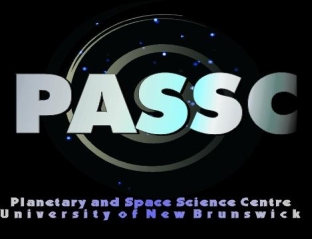 |
|
The Planetary and Space Science Centre (PASSC) opened in April, 2001 and was the first facility of its kind in Canada. There are four main functions of PASSC: Planetary Research: Current areas of Research:
Earth Impact Database: The Earth Impact Database (EID) is a collection of images, publications and abstracts from around the world (compiled over the last 25 years) that provides information about confirmed impact structures for the scientific community and space enthusiasts. Regional Planetary Image Facility: The Regional Planetary Image Facility (RPIF) is one of 17 worldwide NASA-designated facilities providing imagery, maps and data from NASA-led space missions by request. It is the only one of its kind in Canada. The data is available to scientists, educators, students, media and the general public for the purpose of encouraging and furthering space science studies. Contact PASSC:
Planetary and Space Science Centre Telephone: (506) 453-3560 |
|
PASSC Director: John Spray
|
|